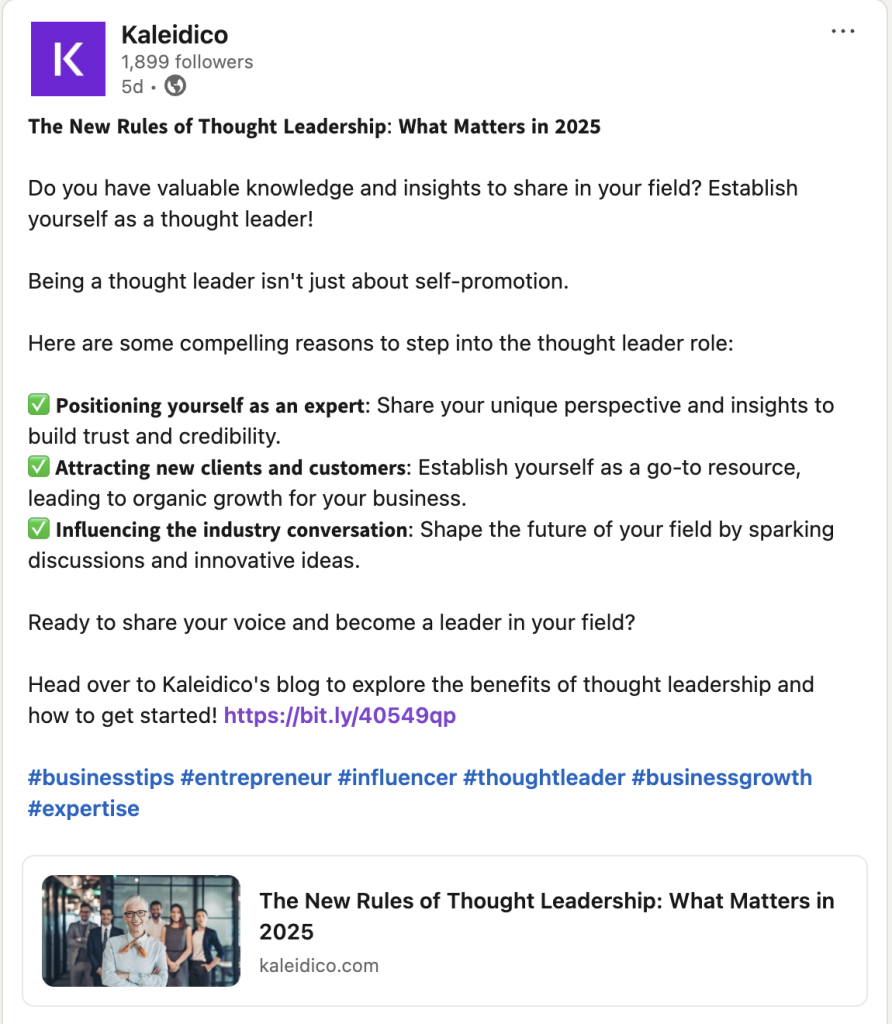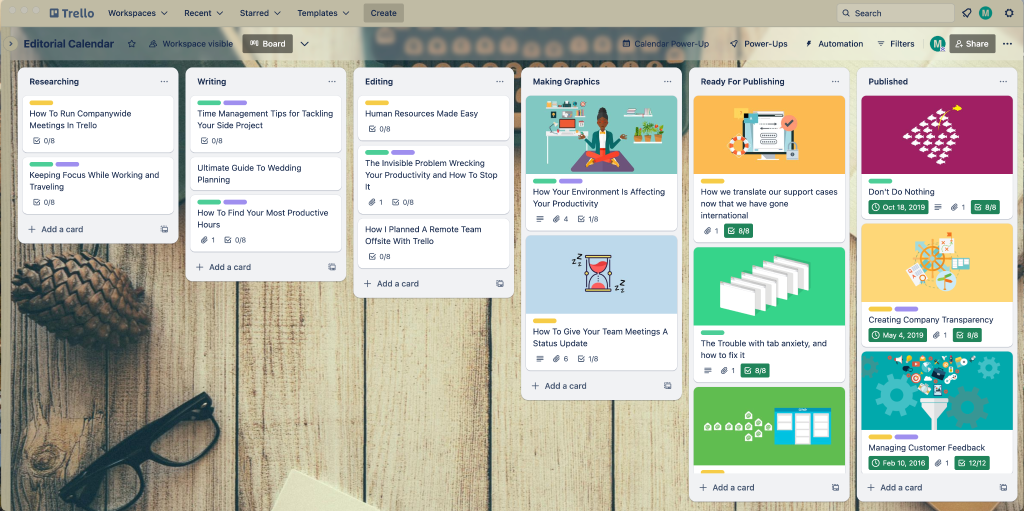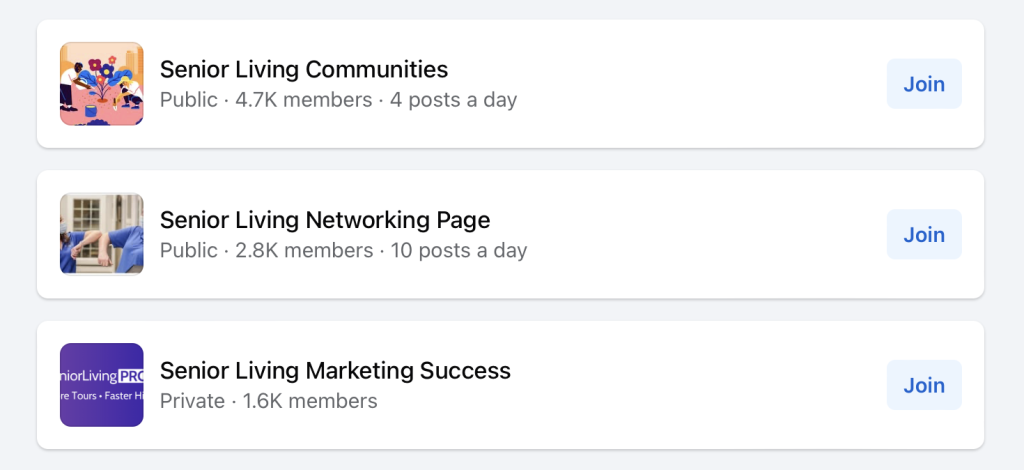Today’s content marketing is nearly synonymous with the broader concept of “marketing.”
That’s because content is infused into nearly every aspect of a digital strategy, from brand awareness to lead nurturing.
But modern consumers are raising the bar, demanding authentic, value-driven, personalized campaigns that deliver the right messages at the right time.
In this article, we’ll guide you through everything you need to know to create a content marketing plan that meets these demands and drives measurable results.
Schedule a Discovery Session
Learn how to attract new leads and clients.
What is a content marketing plan?
A content marketing plan outlines how your business creates, distributes, and manages content.
Content is meant to be tied back to specific business goals, such as increasing brand awareness, generating more leads, or nurturing customer loyalty.
Content creation without some type of plan can quickly spiral out of control because of the many moving parts:
- Who created what?
- Where is it saved?
- Where did they post it?
- How did it perform?
- What do we create next?
A content marketing plan helps businesses align messages across channels, build trust with the audience, and transform creative efforts into tangible results.
How to create a content marketing plan in 10 steps
The best way to create a content marketing plan is to break it down into manageable steps.
The following 10 steps will help you build a powerful strategy that aligns with your broader business goals, engages your target audience, and drives success.
1. Define your objectives
What are you hoping to achieve?
At the start of any successful content marketing plan, you need a straightforward understanding of what you want to accomplish and a method for tracking your progress.
Here are some examples of how to begin:
- Tie your goals to key performance indicators (KPIs): Lead generation and brand awareness are two common goals. Tracking these goals might involve measuring the number of new leads you capture through your content or tracking your content reach, impressions, or social media mentions.
- Set and track your goals with tools: Depending on how simple or complex your content marketing plan is, you can use tools like Google Docs, Notion, or Trello to track goals and progress or more robust, detailed platforms like Monday.com or Asana.
Now that you’ve laid the groundwork for your content marketing plan, you can move on to your audience.
2. Identify your target audience
Today’s audiences are most attracted to content that reflects their needs, behaviors, preferences, and challenges.
Personalized content is a requirement for standing out—not an option. Fortunately, AI-assisted tools and platforms like Google Analytics can provide valuable insights.
Focus on behavioral data, including:
- Preferred formats, such as blogs, videos, etc.
- Top platforms
- How they interact with your content
Then, segment your audience into groups with shared traits or needs to deliver personalized messaging.
3. Develop your brand story
Your brand story connects you to your audience and gives your content a voice and purpose.
Essentially, it tells your audience why they should care.
The following strategies can help you tell your story:
- Create a unique value proposition (UVP): Write a simple statement communicating what sets your brand apart and why your prospects should choose you.
- Leverage true storytelling: Compelling stories make your UVP come to life. Consider sharing how your brand started, customer success stories, or behind-the-scenes content.
4. Build your content ecosystem
A content ecosystem starts with a “content hub,” which typically is a website that holds all of your most valuable assets, including:
- Blog posts
- Whitepapers
- Case studies
- Videos
- Evergreen resources
The rest of your ecosystem includes external platforms like social media and email marketing.
The goal is to direct most traffic back to your content hub for deeper engagement and lead capturing, but each platform serves a purpose in helping your audience find and interact with your content.

5. Map out your content types and formats
Different platforms serve different purposes and audiences.
For example, YouTube is best for long-form videos, while Instagram is meant for infographics, photos, or short-form videos.
Using your audience data, you can match specific content types and formats to the right platforms and audiences. A mix of “evergreen content,” like guides or tutorials mixed with seasonal or real-time content, is most effective.
6. Create an editorial calendar
Editorial calendars keep your content organized. You can incorporate these calendars into tools like Google Docs, Notion, Trello, or whichever marketing platform you use.
The idea is to help you visually lay out your tasks, deadlines, and workflows so nothing gets lost.

In this editorial calendar template from Trello, the creators organize the content flow by phase of work, including “Researching,” “Writing,” and “Editing.”
There’s no right or wrong way to create an editorial calendar—it just needs to work for you and your team.
7. Focus on multi-channel distribution
A multi-channel strategy distributes your content wherever your audience spends their time.
The keys to successful multi-channel distribution include:
- Using a consistent tone, visuals, and messaging across platforms
- Customizing content to fit the platform, such as longer videos on YouTube and snippets of the same video used for Instagram Reels or TikTok
- Monitoring how your content performs on different channels and adjusting accordingly
8. Prioritize engagement and community building
Instead of chasing “likes” and views, the 2025 approach builds loyal, engaged communities.
Methods for increasing interactions on your channels:
- Live streams
- Polls and surveys
- Interactive Q&As
Community-building strategies create loyal audiences that support your brand long-term. In 2025, look for close-knit communities on Reddit or Facebook Groups to build deeper relationships.

9. Measure your performance
Tracking your content’s performance is as simple as using the tools available on your existing platforms, such as Google Analytics, your social media pages, or your email marketing platform.
Use this data to determine what’s working, what’s not, and what needs improvement.
10. Optimize for the future
Your content marketing strategy must evolve with the latest trends and technology.
In 2025, that means staying up on the latest AI tools to help you create and personalize content, track performance, and watch emerging social media platforms that your audience may jump on.
Kaleidico: Your competitive advantage
Kaleidico’s marketing services include custom web design, lead generation, content marketing, email marketing, social media management, and more.
We can help you build a content marketing plan tailored to your brand’s needs and goals.

